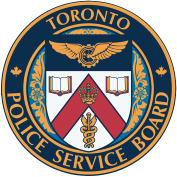
V AI-003/AI-016 – Equal Opportunity, Discrimination and Workplace Harassment, Violence and Sexual Harassment Prevention
|
REPORTING REQUIREMENT |
Annual Report Toronto Police Service - Human Resources Strategy Annual Reports |
|
LEGISLATION |
Police Services Act, R.S.O. 1990, c.P.15, s 31(1)(c), 47(1)(2). Ontario Human Rights Code, R.S.O. 1990, c.H.19, s 24(2), 5(1), 5(2) 7(2) and 7(3)(a) Occupational Health and Safety Act, R.S.O. 1990, c.O.1, s 32.0.1-32.0.7, 43(1), 43(2)(a) |
The Toronto Police Services Board is committed to the principle that every person has a right to receive police services without discrimination or harassment, as provided by law, including the Ontario Human Rights Code (the Code).
Further, the Toronto Police Services Board is committed to the principle that all members of the Toronto Police Service (the Service) have a right to work in a safe and healthy environment without discrimination, violence or harassment, including sexual harassment, as provided by law, including the Code and/or the Occupational Health and Safety Act.
This policy is intended to ensure that Service Members feel safe of discrimination, violence and harassment in the workplace, and feel secure in raising complaints of discrimination, violence and harassment where they occur; that all individuals – whether recipients of service or employees – have equal opportunities in receipt of services or employment opportunities; that all allegations of discrimination, violence and harassment are treated in an effective, sensitive and timely manner, with corrective and preventive measures as appropriate; and that those in positions of supervision are held accountable for their actions in relation to these matters.
It is therefore the policy of the Toronto Police Services Board that:
Prevention
- The Chief of Police will develop procedures, programs and initiatives that address:
- equal opportunities, in a manner that is consistent with the principles of the Police Services Act and the Ontario Human Rights Code, including recruitment, selection, career development and promotion as well as receipt of services;
- workplace harassment, including developing and maintaining a program to implement the policy, in accordance with the Occupational Health and Safety Act;
- responding to and preventing workplace violence, including developing and maintaining a program to implement the policy, in accordance with the Occupational Health and Safety Act;
- responding to and preventing discrimination, harassment and sexual harassment in the workplace, including retaliation against Service Members who report or complain about the conduct of another Service Member; and
- employment accommodation in accordance with the Ontario Human Rights Code and section 47 of the Police Services Act.
- The Chief of Police will ensure that no sexist, racist or other derogatory material is displayed in the workplace;
- The Chief of Police will implement an employee appraisal system that includes key commitments related to diversity and human rights;
- The Chief of Police will ensure that all Service members are provided with appropriate information and training on the workplace violence prevention policy and program; and
- The Chief of Police will ensure that all officers receive training on race relations, diversity and human rights.
Reporting
- The Chief of Police will prepare an annual report to the Board that will include:
- a statistical summary, broken down by Sworn or Civilian members, and by management or individual contributor positions, of:
- all reports, complaints and grievances filed during the reporting period with regard to workplace harassment, violence, sexual harassment and discrimination, broken down by the forum in which the complaint was filed (e.g., Professional Standards; Equity, Inclusion & Human Rights; Human Rights Tribunal of Ontario, etc), and where possible, demographic information of the complainant;
- the number of individuals with more than a single complaint filed against them in the previous 24 months;
- findings of investigation of complaints that were concluded during the reporting period and actions taken, including statistical breakdowns of the outcome of these investigations as it relates to both Uniform and Civilian Members;
- type of alternative resolution(s) implemented, if applicable, including statistical breakdowns of whether the resolution(s) were successful or not, as it relates to both Uniform and Civilian Members
- the number of outstanding complaints still under investigation; and
- the number of outstanding complaints still under investigation where the complaints were filed more than a year prior to the beginning of the current reporting period;
- a statistical summary of employment accommodation requests made during the reporting period, and actions taken; and
- a report on the Service’s Human Resources strategy.
- a statistical summary, broken down by Sworn or Civilian members, and by management or individual contributor positions, of:
adequacy standards, administration and infrastructure, inclusion, human rights, health and safety, human resources